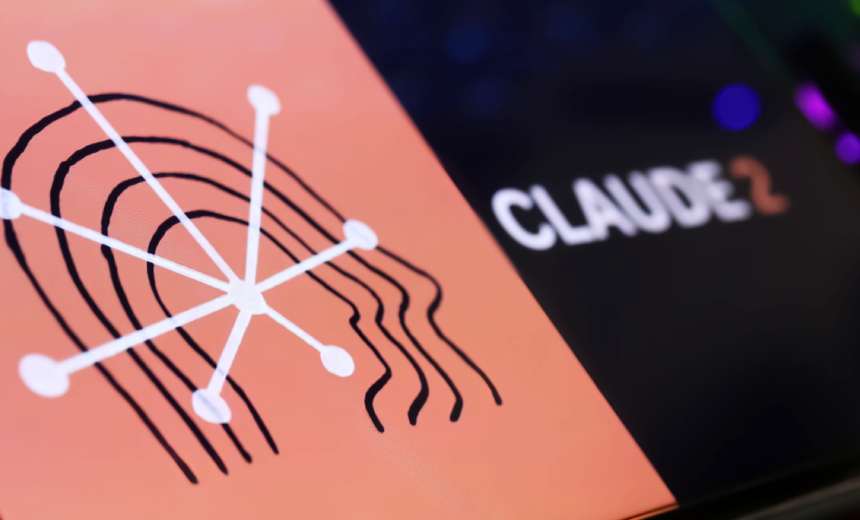
Unveiling Vulnhuntr: A New Dawn in AI-Powered Security
In a landscape continually beset by cybersecurity threats, the advent of an innovative AI tool, Vulnhuntr, signals a promising shift. Developed by the esteemed folks at Protect AI, this autonomous artificial intelligence solution aims to detect elusive remote code flaws and zero-day vulnerabilities, a task traditionally fraught with challenges in accuracy and reliability. What makes Vulnhuntr particularly noteworthy is its foundation on Anthropic’s Claude 3.5 Sonnet large language model, a leap forward in harnessing AI for the critical task of safeguarding our digital assets.
 An illustration of AI-driven security tools making strides in technology.
An illustration of AI-driven security tools making strides in technology.
The Mechanics Behind Vulnhuntr
At its core, Vulnhuntr represents an arduous endeavor to address key limitations commonly associated with large language models (LLMs)—notably, the context window constraints that hinder comprehensive analysis. This sophisticated tool employs retrieval augmented generation to ingest relevant code snippets effectively, parsing substantial texts into manageable tokens. The researchers meticulously configured it using both pre- and post-patch code samples, supplemented by a plethora of vulnerability data from the CVEFixes database.
The most revolutionary aspect of Vulnhuntr is its targeted approach. Instead of grappling with entire files of code that could easily overwhelm the system, it deftly retrieves only critical segments likely to encounter user input, culminating in a streamlined analysis. As Protect AI clarifies, “It automatically searches the project files for files that are likely to be the first to handle user input,” thereby augmenting its efficacy and precision.
A Look at Confidence Scores
Emphasizing the tool’s practical application, researchers have introduced a confidence scoring system ranging from 1 to 10. This feature estimates the authenticity of identified vulnerabilities. For instance, a score of 7 suggests a credible flaw that may require refinement, while scores of 8, 9, or 10 herald strong indications of actual vulnerabilities. This nuanced scoring enhances developers’ understanding of the risks at hand, making vulnerability identification more intuitive and actionable.
A Glimpse into Real-world Applications
Vulnhuntr’s capabilities are already being put to the test in real-world scenarios. In one notable instance, during an analysis of an OpenAI project’s get_api_provider_stream_iter function, researchers pinpointed a server-side request forgery flaw. Such vulnerabilities could potentially enable attackers to exert control over API requests—a reminder of how critical vigilance is in coding practices. By integrating Vulnhuntr into the development lifecycle, organizations can significantly mitigate the risks posed by such exploitable weaknesses.
Striking a Balance: Potential vs. Limitations
Like all pioneering technologies, Vulnhuntr isn’t without its shortcomings. While this AI tool excels in detecting seven specific types of flaws, researchers acknowledge its limitations in recognizing others unless trained further. This introduces a trade-off: expanding its capabilities could ingrain an increase in runtime, complicating the process for developers already burdened by timelines.
Additionally, the tool’s affinity for Python code is another caveat. As it stands, Vulnhuntr struggles to provide accurate data on code written in other programming languages, necessitating a broader approach that one hopes will be addressed in future iterations.
“Last, because LLMs aren’t deterministic, one can run the tool multiple times on the exact same project and get different results,” Plains out Protect AI, indicating a pivotal characteristic of LLMs that users must navigate.
Despite these challenges, Vulnhuntr stands as a formidable contender within the static code analysis arena. Its sophisticated detection capabilities and fostering of fewer false positives set a new bar for security measures in software development.
The Path Ahead
As we anticipate a firmer grasp on the vulnerabilities that plague modern software, Vulnhuntr is just the beginning. Protect AI’s intention to integrate more tokens to encompass entire codebases is a highly welcomed move that boasts immense potential for future deployment. The conversation surrounding AI’s role in cybersecurity is rapidly evolving, and with each innovative tool that emerges, there lies hope for a more secure digital future.
In a world where cyber threats loom large, embracing advancements in AI technology is paramount if we aspire to create a robust defense mechanism. Vulnhuntr demonstrates the strides made in this domain and reminds us just how critical it is to remain vigilant and adaptable as we navigate the complexities of AI and cybersecurity.
As technology continues to progress, asserting that AI models will play an integral role in shaping our approach to cybersecurity might not be far-fetched. Only time will tell—perhaps Vulnhuntr is merely the first step in a much larger revolution.
Join the Conversation
What do you think about Vulnhuntr and AI’s potential to bolster our digital defenses? Join us as we explore this theme further across our platforms and discuss how innovation continues to redefine security in the tech landscape.















